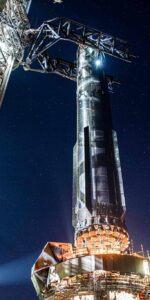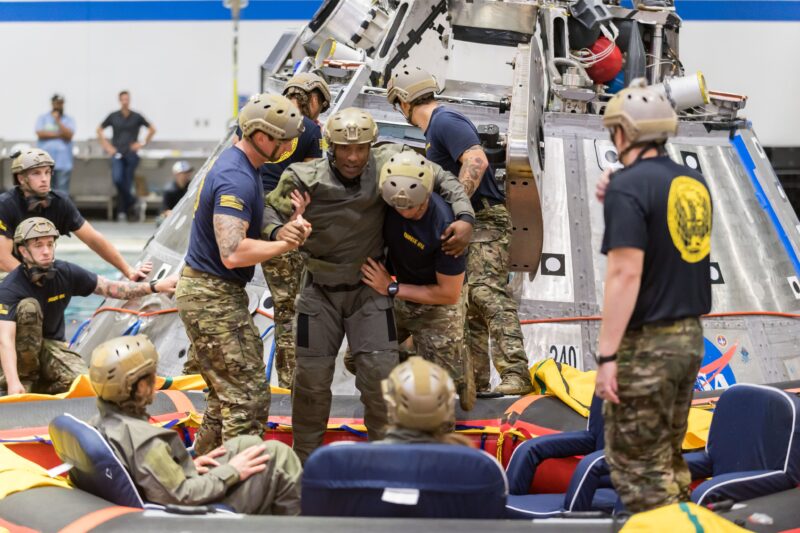
In late 2024, the Artemis 2 Orion spacecraft will splash down in the Pacific Ocean. For astronauts Reid Wiseman, Victor Glover, Christina Koch, and Jeremy Hansen, this event will mark the conclusion of a ten-day odyssey to the Moon and back. Many spectators will assume that the mission is over when the spacecraft impacts the surface of the ocean. However, a successful splashdown will only be the beginning of a complex recovery operation. According to tradition, the flight control team in Houston will not celebrate until Wiseman, Glover, Koch, and Hansen safely exit their spacecraft. History demonstrates that this task is anything but simple. This week, NASA began a series of exercises which will teach the crew and their recovery team how to master the final stage of the Artemis 2 mission. By coincidence, this milestone occurred on the eve of the anniversary of Gus Grissom’s Mercury-Redstone 4 mission. The lessons learned from Grissom’s narrow escape from his sinking spacecraft continue to positively influence the training process for the first Artemis crew.
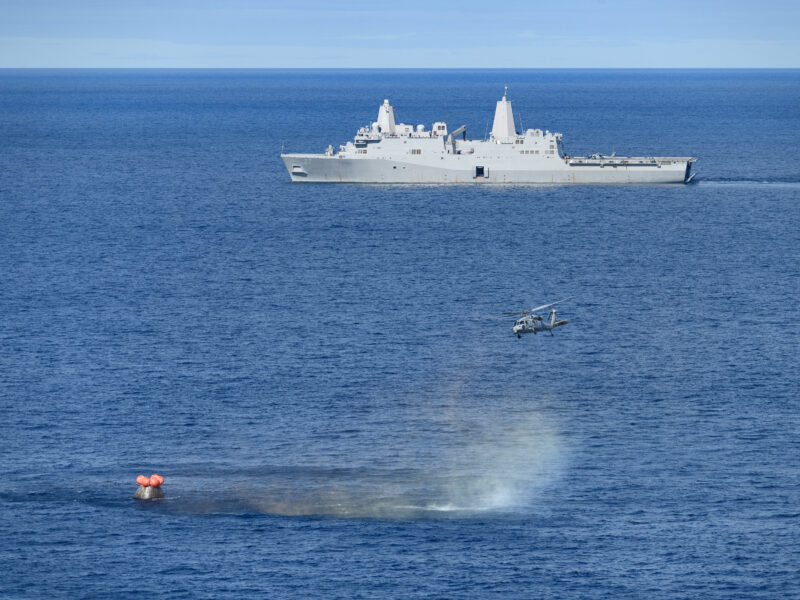
The Artemis program’s recovery procedures are the product of over a decade of planning and simulations. When Orion returns from deep space, it will be met by a joint task force managed by NASA and the U.S. Navy. The centerpiece of the recovery fleet will be a 660-foot-long Landing Platform Dock (LPD) ship. These vessels are distant descendants of the landing ships used on D-Day. The centerpiece of each ship is a large 390-by-50-foot well deck which can be flooded with seawater. This compartment was designed to disgorge hundreds of Marines onto an occupied beach, but in peacetime, it also enables NASA to tow Orion directly into the ship without hoisting it out of the ocean. To recover Orion, the LPD will carry an elite team of divers, engineers, pilots, and flight surgeons, as well as a retinue of Seahawk helicopters, skiffs, and specialized equipment.
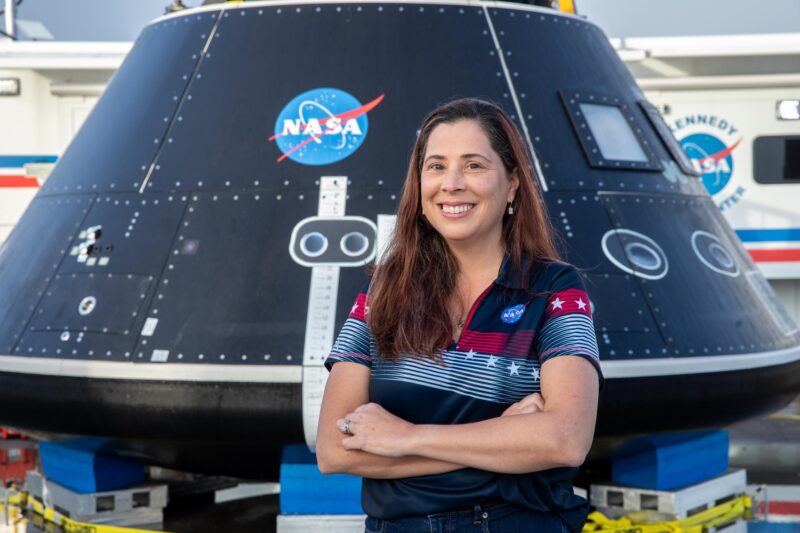
Prior to the Artemis 1 mission, the Orion team was considering two options for removing the crew from their spacecraft. In the first scenario, Wiseman’s crew would exit the capsule while it is floating in the open ocean; in the second, they would wait until it is secured inside the well deck of the recovery ship. It appears that NASA has decided to focus its attention on the former option, which mirrors the procedures which were used during Apollo. While egressing a floating capsule is more difficult than disembarking inside the well deck, it allows NASA flight surgeons to quickly assist the astronauts if they need medical attention. According to Artemis 2 Recovery Director Lili Villarreal, “We have to recover the crew in the open ocean within two hours of splashdown before bringing the capsule inside the well deck.” [1]
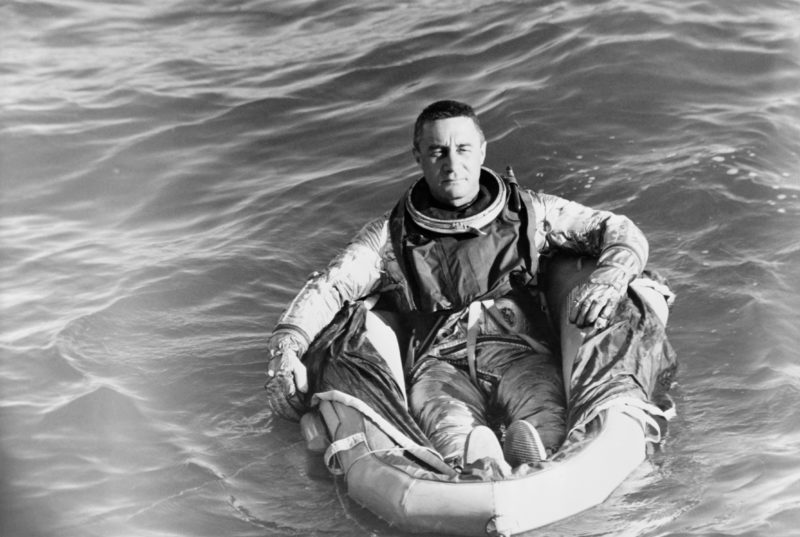
A floating capsule is at the mercy of waves, wind, and sea spray. A colorful history of recoveries at sea demonstrates that training and preparation can potentially save the lives of the astronauts. The dangers inherent in recovery became infamous during America’s second human spaceflight. 62 years ago today, Gus Grissom splashed down off the coast of Florida in his Mercury spacecraft, Liberty Bell 7. Up until that point, the flight had been nearly flawless. Minutes later, Grissom nearly lost his life. A discharge of static electricity from a loitering helicopter triggered the explosive bolts on Liberty Bell 7’s hatch, and a deluge of water rushed into the capsule. Fortunately, the Mercury astronauts practiced ingressing and egressing their capsules countless times. Grissom quickly scrambled through the open hatchway, and he was able to tread water for five minutes until he was rescued by a second helicopter. The media accused Grissom of panicking and manually triggering the hatch; he was only definitively vindicated by a new analysis of reprocessed film footage in 2021.
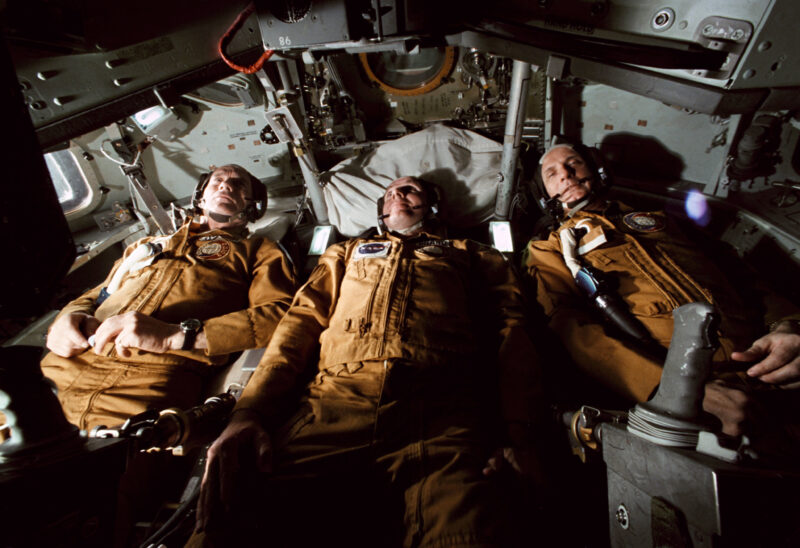
A damaged spacecraft has the potential to be just as dangerous as the ocean. The Apollo-Soyuz Test Project, piloted by Tom Stafford, Deke Slayton, and Vance Brand, featured the final splashdown of the Apollo era. It was also one of the most eventful. A vent inadvertently ingested a plume of nitrogen tetroxide from a maneuvering thruster, distributing the compound throughout the cabin. Nitrogen tetroxide and its counterpart, hydrazine, are essential for spaceflight, as they spontaneously combust when they are mixed. However, they are also extremely toxic. For reasons which remain unclear, Stafford displayed unusual resistance to the effects of the compound. He quickly distributed oxygen masks to his unconscious crewmates, which likely saved the lives of all three men. To prevent a similar issue from arising during an Artemis mission, NASA outfitted the Orion Crew Survival Suit with a ten-minute personal air supply. This emergency oxygen reserve should last long enough for Wiseman, Glover, Koch, and Hansen to exit Orion if their primary air supply is contaminated for any reason.
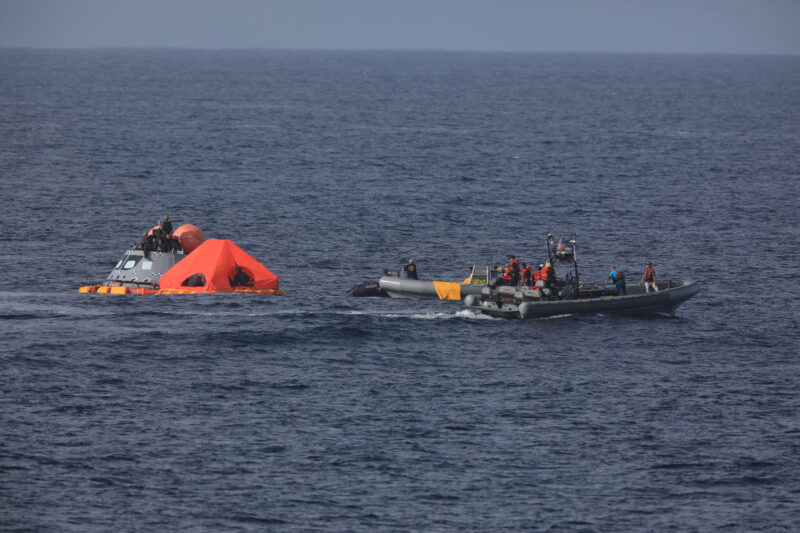
The successful landing of Artemis 1 verified that NASA and the U.S. Navy can recover an Orion capsule from the ocean. The professionalism of the recovery team was evident as they secured the capsule inside the well deck of the U.S.S. Portland without issue. However, the presence of a crew inside the vehicle will add a new level of complexity to this operation. To prepare for Artemis 2, NASA initiated a new series of recovery tests in February of 2023. These training exercises will continue over the coming two years, and they will gradually increase in complexity as the launch date approaches.
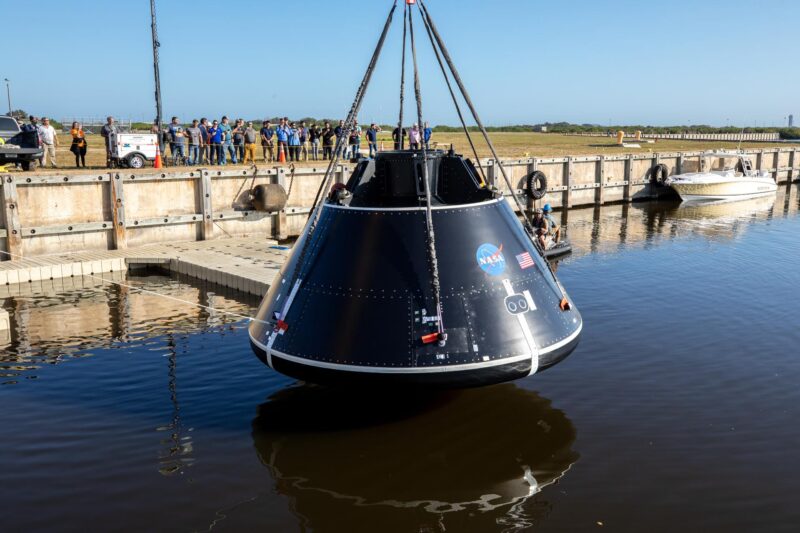
The initial trials took place close to home. To test their procedures for extracting astronauts from Orion, the recovery team lowered a full-scale mockup of the capsule into the Kennedy Space Center’s Turn Basin. Over the course of two weeks, engineers changed the orientation of the capsule several times, confirming that it will remain buoyant even if it initially settles upside down (in NASA’s terminology, this configuration is known as “Stable 2”). Meanwhile, Navy divers practiced attaching a flotation collar to the capsule to help it remain afloat. They also introduced an inflatable covered “porch,” which will provide the four crewmembers with a place to rest before they are winched into a helicopter inside a rope basket.
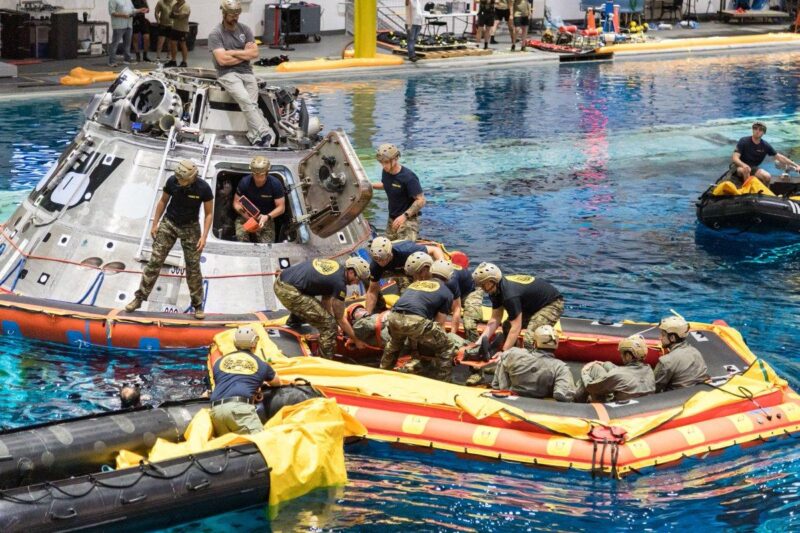
On Monday, the preparations for the recovery of Artemis 2 entered their next stage. The current series of tests is based at the Johnson Space Center in Houston, and it revolves around the astronauts themselves. Reid Wiseman, Victor Glover, and Christina Koch practiced exiting an Orion mockup which was floating inside the Neutral Buoyancy Laboratory. This colossal swimming pool is large enough to hold a submerged mockup of the International Space Station, and it is ordinarily used for spacewalk simulations. Its sheer size allows it to double as a perfect controlled environment for recovery training. The crew was assisted by a large team of NASA engineers and Navy rescue workers. Judging from the beaming smiles of Koch, Glover, and Wiseman, the test was another positive step towards their launch.
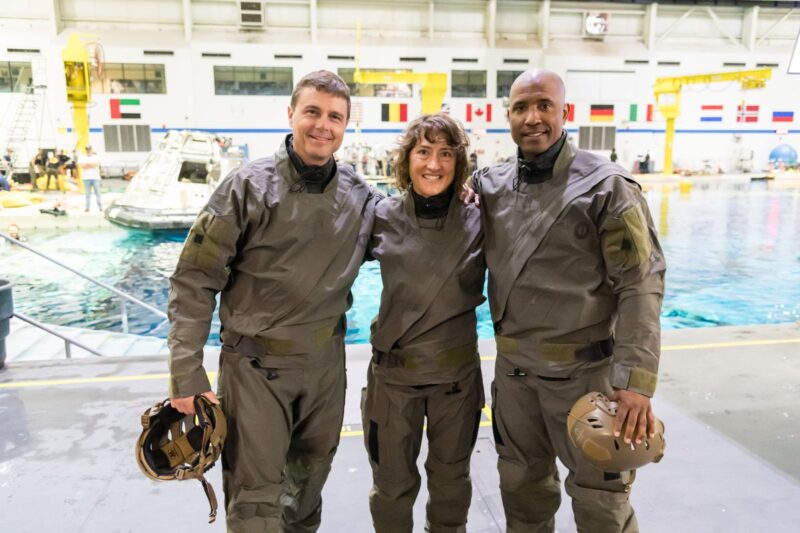
In the coming months, the Orion recovery team will take their newly-honed procedures to sea. Prior to the launch of Artemis 1, a series of Underway Recovery Tests off the coast of San Diego were used to practice retrieving the capsule using an actual ship and helicopters. These tests are scheduled to resume later this year, and they will serve as full dress rehearsals for splashdown. Like the recent simulations in Houston, they will incorporate the Artemis 2 crew and the entire recovery team.
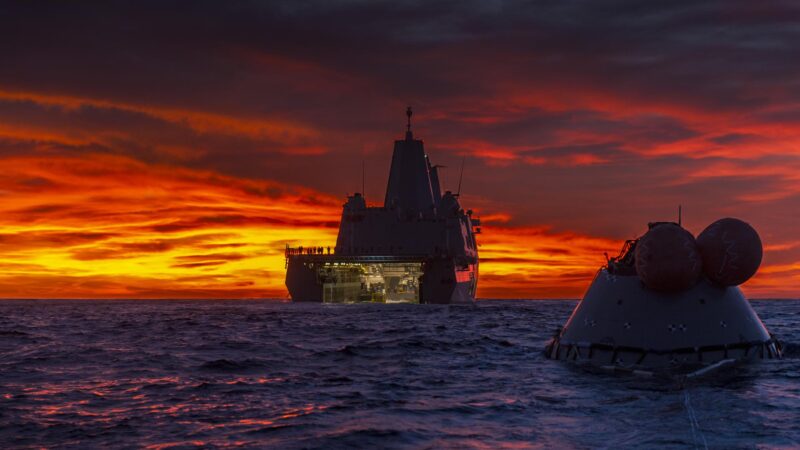
It is fitting that the initial training for the Artemis 2 crew is preparing them for the final stage of their mission. The most crucial objective of any human spaceflight is to return the crew safely to Earth. For Artemis 2, this goal will not be achieved until Wiseman, Glover, Koch, and Hansen are standing safely on the deck of the recovery ship. Thanks to the diligent preparation of a skilled team, NASA can be confident that the first lunar voyagers of the 21st Century will receive the hero’s welcome which they deserve.
FOLLOW AmericaSpace on Facebook and Twitter!
Missions » SLS » Artemis »




